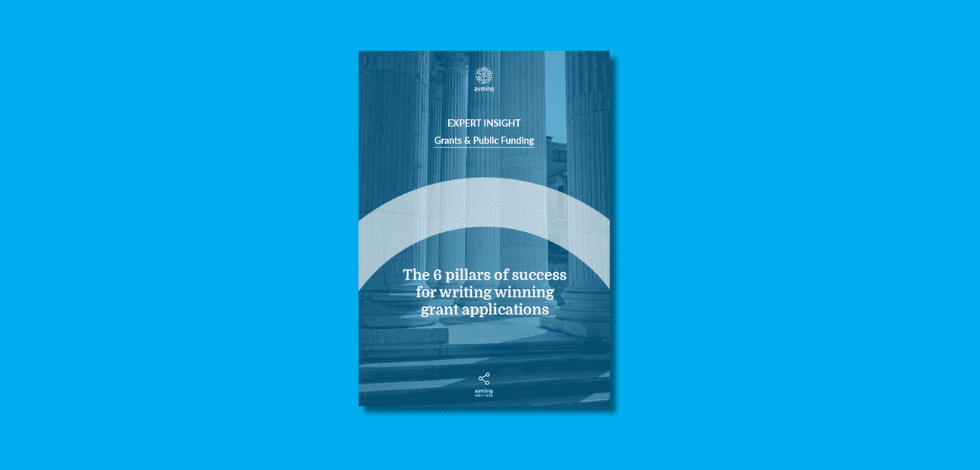R&D tax relief provides excellent incentives for UK companies to invest in innovation, and once they start receiving the relief, many of them begin to factor the benefit into long-term planning.
The intricacies of the regimes, however, mean that it is possible that you might do something for perfectly good business reasons, which has the unintended and unforeseen effect of limiting your claim. To put it bluntly, there are several perfectly good ways to screw up your R&D claim.
I have seen many clients planning changes to their operations or structure which could affect their R&D claims. It is important to factor the potential hidden impact into your decision process and seek specialist advice to ensure the risks are minimised.
Here are some of the common pitfalls I have encountered with clients…
Six perfectly good ways to screw up your R&D claim:
1. Grow out of being an SME
This may sound strange but the first perfectly good way to screw up your R&D claim is to grow out of being an SME. In general, it is a good thing for a company to be growing – certainly most Directors and investors would think so. However, the generosity of the R&D incentive decreases by over 66% from 33p in the pound to 10p, once a business grows out of the SME regime, in addition to which claims are more restricted in regards to subcontracted costs. The line between SMEs and large companies is very stark – once over 500 full-time-equivalent headcount, or €100M turnover and €86M total assets, a company is allowed a single ‘year of grace’ where it may continue to claim as an SME, before it becomes a large company and the claim value can be radically reduced – unless there is a commensurate increase in the expenditure.
2. Buy, or be bought by, another company
The regulations that define an SME for purposes of the R&D regime take account of companies connected through common ownership. This means that purchase by a large company – or even the purchase of a significant shareholding – can mean that a company ceases to be an SME. This is even more problematic given that in this situation the ‘year of grace’ does NOT apply, but a company is considered to be a large company immediately, and for the entire year in which the purchase takes place, limiting the benefit available.
3. Transition from loss to profit
Obviously the long-term goal of most companies is to make a profit. However the transition can be quite tricky for companies that have been loss making for a long period – particularly start-ups reaching maturity – because of the way tax losses and R&D reliefs interact. A company that makes a loss in-year can recognise an immediate cash benefit of up to 33% of its R&D expenditure, and a taxpaying company will realise a cash benefit of around 25%. For a company that has been accumulating losses for several years, however, the benefit of an R&D claim is to extend these losses, meaning that the actual cash benefit is deferred until future years. For small businesses, cash is king, and the sudden lack of an annual injection needs to be anticipated.
It’s highly unlikely that a company will deliberately avoid these scenarios just to preserve its R&D claim. One should, however, anticipate them, understand the impact, and plan accordingly.
That said, there are some situations which are avoidable, as long as they are identified soon enough and managed appropriately…
4. Pay the directors large dividends
Since dividend income is subject to a lower level of income tax than employment income, many owner-directors elect to pay themselves dividends, rather than a salary. In terms of reducing their personal income tax burden, this is a very sensible piece of tax planning. However, the vagaries of the R&D regime mean that dividends are not claimable as a cost of performing R&D (specifically, because dividends are not a ‘consequence of employment’). This can mean that a highly paid Technical Director, who spends most of his time undertaking R&D, ends up contributing very little to the R&D claim because his remuneration is simply not eligible.
5. Internal restructuring
Any number of possible consequences can occur when a restructuring takes place. This is usually because of fundamental requirements of the R&D incentives that are so basic they are often not considered. For example, if a company’s trade and assets are transferred to another business, ordinarily it could claim for R&D carried out up to that point. However, if that company is then wound up, it is no longer able to make any claim under the SME regime. Care must also be taken if costs are being transferred internally within a group of companies: in general it is possible to claim these costs in one of the two companies involved, so long as they have a trade subject to UK Corporation Tax. However if it is not clear what the recharge consists of, this can make identification of the correct claiming company very difficult. This is particularly the case when R&D is being carried out by one company, but some (or all!) of the staff involved are employed by another company in the group – if this is not explicitly recharged on a time basis it can be very difficult to claim any of this cost.
6. Badly organise outsourcing
One of the great features of the UK schemes is the capacity to claim R&D costs paid to third parties, either as Subcontracted R&D or as Externally Provided Workers. However, the line between these categories is not always clear, and it is possible to end up with outsourced costs that don’t meet the criteria for either category. This is particularly relevant for large companies, since under the R&DEC scheme subcontracted R&D is much more restricted.
At Ayming UK, we have seen many clients planning changes to their operations or structure which could affect their R&D claims. It is important to factor the potential hidden impact into your decision process, and seek specialist advice to ensure the risks are minimised.
Evaluate your claim
Take a look at Ayming’s R&D Claim Analyser, a simple, online self-assessment tool which provides you with an detailed report highlighting areas of your claim where you are doing well, and providing opportunities for improving:















